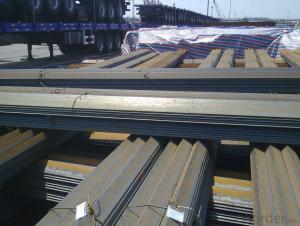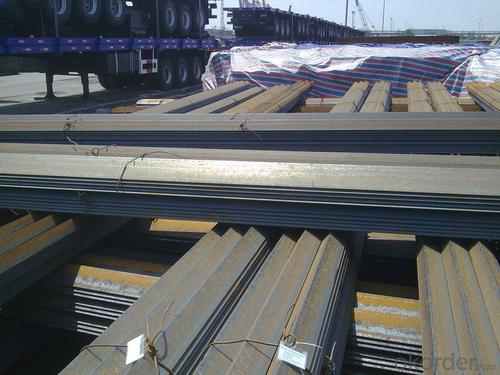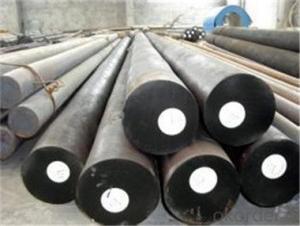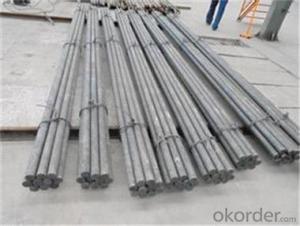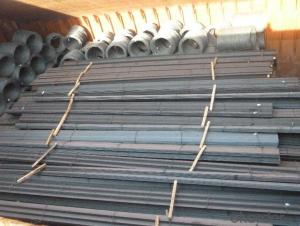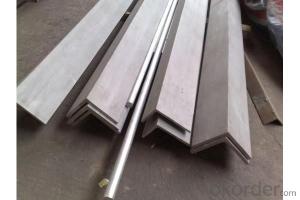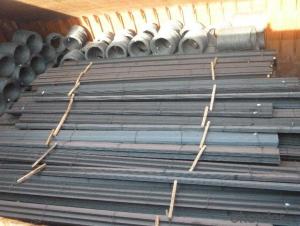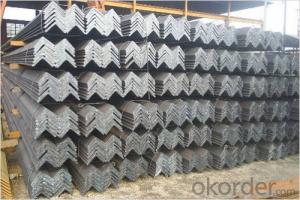Offer MS Hot Rolled Equal Angle Bars From CNBM
- Loading Port:
- Tianjin
- Payment Terms:
- TT OR LC
- Min Order Qty:
- 25 m.t.
- Supply Capability:
- 10000 m.t./month
OKorder Service Pledge
OKorder Financial Service
You Might Also Like
Specification
OKorder is offering high quality Hot Rolled Steel Angle at great prices with worldwide shipping. Our supplier is a world-class manufacturer of steel, with our products utilized the world over. OKorder annually supplies products to European, North American and Asian markets. We provide quotations within 24 hours of receiving an inquiry and guarantee competitive prices.
Product Applications:
Hot Rolled Steel Angle are ideal for structural applications and are widely used in the construction of buildings and bridges, and the manufacturing, petrochemical, and transportation industries.
Product Advantages:
OKorder's Steel Angle are durable, strong, and resist corrosion.
Main Product Features:
· Premium quality
· Prompt delivery & seaworthy packing (30 days after receiving deposit)
· Corrosion resistance
· Can be recycled and reused
· Mill test certification
· Professional Service
· Competitive pricing
Product Specifications:
Manufacture: Hot rolled
Grade: Q195 – 235
Certificates: ISO, SGS, BV, CIQ
Length: 6m – 12m, as per customer request
Packaging: Export packing, nude packing, bundled
Sizes: 25mm-250mm | ||
a*t | ||
25*2.5-4.0 | 70*6.0-9.0 | 130*9.0-15 |
30*2.5-6.6 | 75*6.0-9.0 | 140*10-14 |
36*3.0-5.0 | 80*5.0-10 | 150*10-20 |
38*2.3-6.0 | 90*7.0-10 | 160*10-16 |
40*3.0-5.0 | 100*6.0-12 | 175*12-15 |
45*4.0-6.0 | 110*8.0-10 | 180*12-18 |
50*4.0-6.0 | 120*6.0-15 | 200*14-25 |
60*4.0-8.0 | 125*8.0-14 | 250*25 |
FAQ:
Q1: Why buy Materials & Equipment from OKorder.com?
A1: All products offered byOKorder.com are carefully selected from China's most reliable manufacturing enterprises. Through its ISO certifications, OKorder.com adheres to the highest standards and a commitment to supply chain safety and customer satisfaction.
Q2: How do we guarantee the quality of our products?
A2: We have established an advanced quality management system which conducts strict quality tests at every step, from raw materials to the final product. At the same time, we provide extensive follow-up service assurances as required.
Q3: How soon can we receive the product after purchase?
A3: Within three days of placing an order, we will begin production. The specific shipping date is dependent upon international and government factors, but is typically 7 to 10 workdays.
Images:
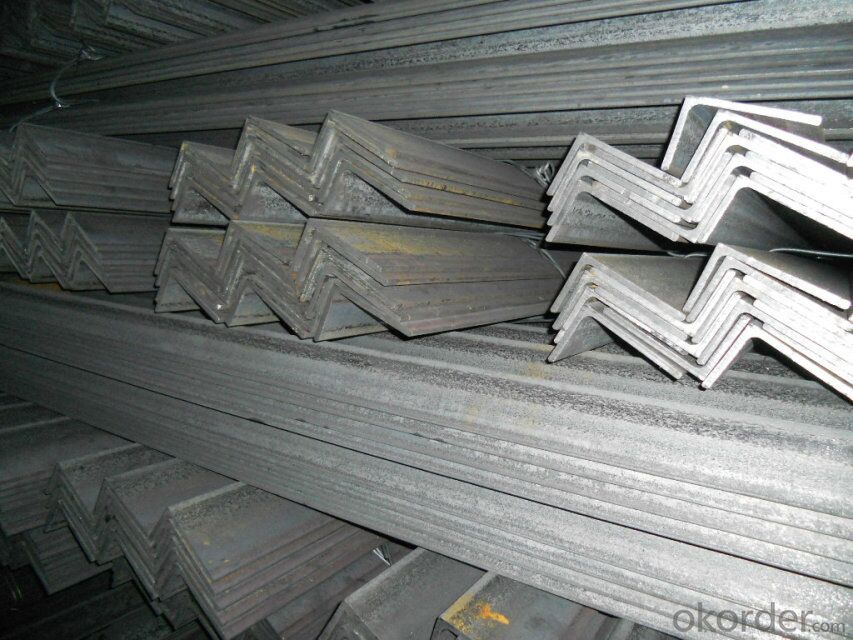
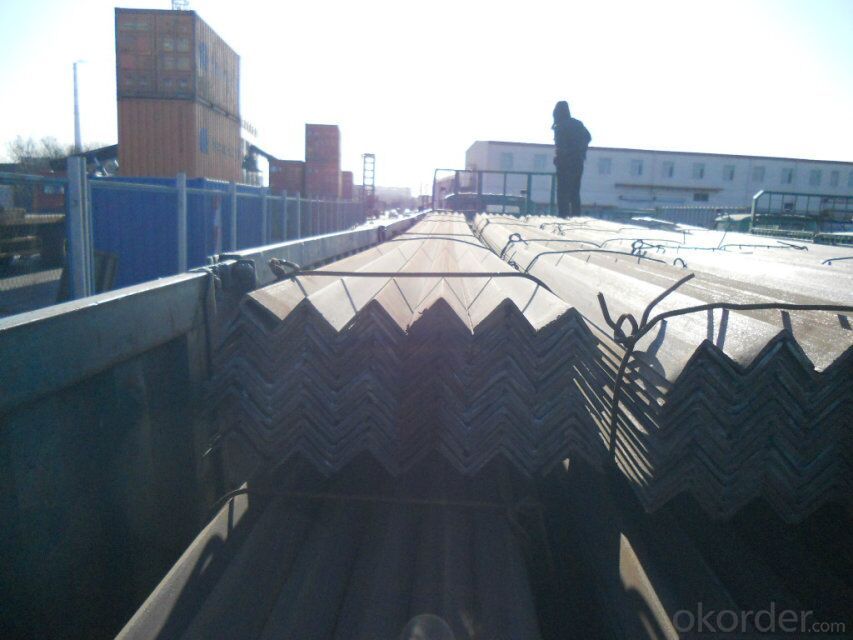
- Q: How do steel angles perform under vibration or resonance conditions?
- Steel angles are widely recognized for their exceptional structural properties, specifically their ability to endure vibrations and resonance circumstances. In the presence of vibrations, steel angles demonstrate impressive stiffness and damping characteristics, allowing them to proficiently dissipate the energy generated by these vibrations. This behavior is a result of the inherent material properties of steel, including its substantial strength and rigidity. Additionally, steel angles exhibit commendable performance under resonance conditions. Resonance arises when the frequency of external excitation matches the natural frequency of the steel angle. In such instances, the steel angle may encounter amplified vibrations that could potentially lead to structural failure if not adequately addressed. Nevertheless, steel angles are meticulously designed and fabricated with resonance considerations in mind, guaranteeing their capacity to withstand and alleviate the repercussions of resonance. To further enhance the performance of steel angles under vibration or resonance conditions, engineers can employ an array of techniques. These techniques encompass the incorporation of damping materials or devices to absorb or dissipate vibrational energy, the alteration of the geometric properties of the steel angle to modify its natural frequency, and the utilization of vibration isolation systems to minimize the transmission of vibrations to the steel angle. In conclusion, steel angles are exceptionally suitable for applications that require resistance to vibrations or resonance conditions. Their remarkable strength, stiffness, and damping properties enable them to effectively withstand and mitigate the effects of vibrations, thereby ensuring the integrity and stability of the structure in which they are employed.
- Q: Can steel angles be used in outdoor applications?
- Yes, steel angles can be used in outdoor applications. Steel angles are known for their strength, durability, and resistance to corrosion, making them suitable for various outdoor projects such as construction, infrastructure, and outdoor furniture.
- Q: How do you calculate the shear force on a loaded steel angle?
- To calculate the shear force on a loaded steel angle, you need to determine the applied load on the angle and consider the angle's cross-sectional properties. Shear force can be calculated by multiplying the applied load by the appropriate factor of safety, and dividing it by the cross-sectional area of the angle.
- Q: How do you specify steel angles in drawings?
- Steel angles can be specified in drawings by indicating the angle's dimensions, such as the length of each leg, the thickness, and the angle size. Additionally, the specific material grade, any required surface treatment, and any other relevant details can be included in the specifications.
- Q: What are the common design codes or standards for steel angles?
- There are several common design codes and standards that govern the use of steel angles in structural design. These codes and standards ensure that the angles are designed and manufactured to meet certain safety and performance criteria. One of the most widely used design codes for steel angles is the American Institute of Steel Construction (AISC) Manual of Steel Construction. The AISC provides comprehensive guidelines and specifications for the design, fabrication, and erection of steel structures, including angles. This manual includes detailed information on the design strength, allowable stress levels, and geometric properties of angles. In addition to the AISC Manual, other design codes and standards may also be applicable depending on the specific project and location. These include international standards such as the Eurocode, British Standards (BS), and Australian Standards (AS). Each of these standards may have slightly different requirements for the design and use of steel angles, so it is important to consult the appropriate standard for the specific project. Furthermore, the American Society for Testing and Materials (ASTM) has established standards for the physical and mechanical properties of steel angles. These standards ensure that the angles meet certain quality and performance requirements. The most commonly used ASTM standard for steel angles is ASTM A36, which specifies the general requirements for carbon structural steel. Overall, the common design codes and standards for steel angles provide guidance on factors such as load capacity, strength, and safety considerations. Adhering to these codes and standards ensures that steel angles are designed and used in a manner that promotes structural integrity and reliability.
- Q: Do steel angles have a smooth or textured surface?
- Steel angles typically have a textured surface due to the manufacturing process, which involves rolling or bending steel sheets.
- Q: What are the cost considerations for using steel angles?
- There are several cost considerations to take into account when using steel angles. Firstly, the cost of the steel material itself can vary depending on the grade and quality of the steel. Higher-grade steel angles tend to be more expensive, but they offer better strength and durability. Additionally, the length and size of the steel angles will affect the overall cost. Longer and larger angles will generally be more expensive due to the increased amount of steel required. It is important to carefully assess the required dimensions to avoid unnecessary costs. Another cost consideration is the fabrication and finishing of the steel angles. If custom fabrication or special finishing techniques are required, such as welding, cutting, or painting, these processes can add to the overall cost. It is essential to factor in these additional expenses when budgeting for the use of steel angles. Transportation costs should also be considered. Steel angles are heavy and bulky, which can lead to higher shipping costs, especially for long distances. It is crucial to account for these expenses, particularly if the project requires a significant quantity of steel angles. Lastly, it is important to consider the long-term costs associated with steel angles. While steel is durable and long-lasting, it may require maintenance or protective coatings to prevent corrosion over time. These maintenance costs should be factored into the overall budget to ensure the longevity and reliability of the steel angles. Overall, the cost considerations for using steel angles include the price of the steel material, the dimensions and size of the angles, fabrication and finishing processes, transportation expenses, and long-term maintenance costs. Evaluating and planning for these factors will help ensure a cost-effective and successful use of steel angles in various applications.
- Q: How do steel angles perform in terms of electromagnetic shielding?
- Steel angles have a reputation for being highly effective in terms of electromagnetic shielding. This is mainly because of their exceptional electrical conductivity and magnetic permeability. These particular qualities enable steel angles to efficiently redirect or absorb electromagnetic waves, resulting in a reduced impact on adjacent electronic devices or sensitive equipment. The shape and geometry of steel angles also play a role in their shielding capabilities, as they can be strategically positioned to create barriers or enclosures that obstruct or redirect electromagnetic fields. Additionally, the thickness or gauge of the steel angle can further amplify its shielding performance. In general, steel angles find widespread use in a variety of applications where minimizing or controlling electromagnetic interference is crucial, such as in the construction, telecommunications, electronics, and automotive industries.
- Q: Are steel angles resistant to impact or vibration?
- Steel angles exhibit resistance to both impact and vibration. The strength and toughness of steel make it highly resistant to impact, as it is capable of absorbing and distributing the force generated by an impact, thereby preventing any structural damage. Additionally, steel angles possess a high natural frequency, enabling them to withstand vibrations without experiencing significant deformation or failure. Nevertheless, the resistance of steel angles to impact and vibration may vary depending on factors such as the specific grade and thickness of the steel, as well as the intensity and duration of the impact or vibration. Therefore, it is crucial to carefully consider the specific requirements and conditions of the application when evaluating the suitability of steel angles for impact and vibration resistance.
- Q: How do you determine the appropriate length of a steel angle for a specific application?
- To determine the appropriate length of a steel angle for a specific application, you typically need to consider the dimensions and requirements of the project. This involves assessing factors such as the desired angle, the load and weight it will be subjected to, the structural support needed, and any specific design or building codes that must be adhered to. Consulting engineering and construction guidelines, performing calculations, and seeking professional advice can help ensure the correct length of steel angle is determined for the application.
Send your message to us
Offer MS Hot Rolled Equal Angle Bars From CNBM
- Loading Port:
- Tianjin
- Payment Terms:
- TT OR LC
- Min Order Qty:
- 25 m.t.
- Supply Capability:
- 10000 m.t./month
OKorder Service Pledge
OKorder Financial Service
Similar products
Hot products
Hot Searches
Related keywords
